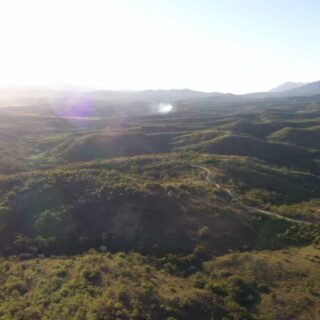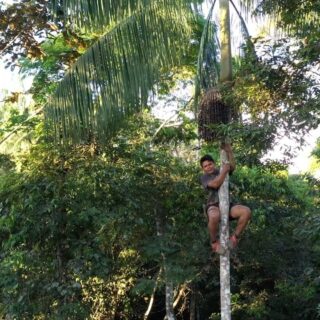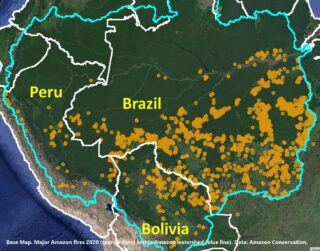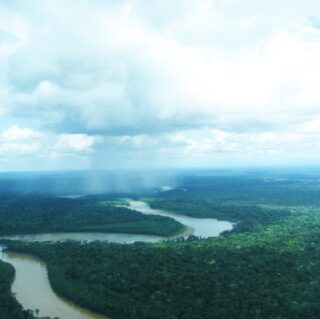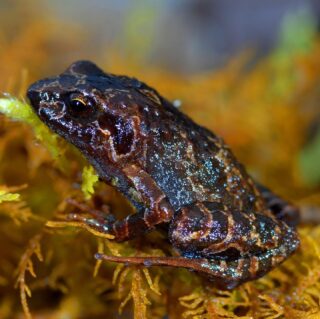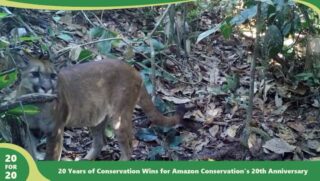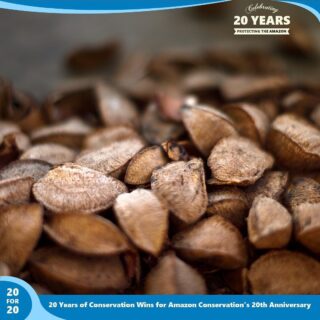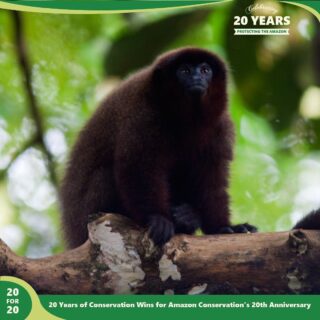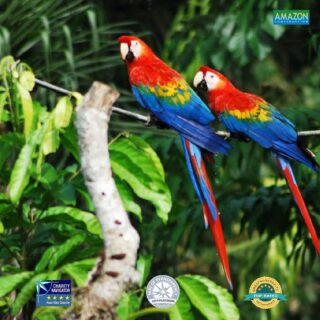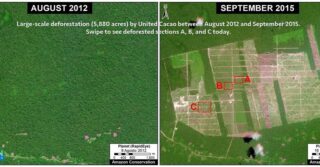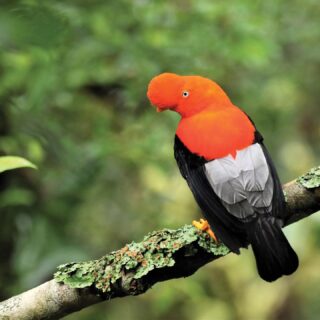 This month, we continue to celebrate Earth Month by honoring nature and all of the unique biodiversity and resources that the Amazon offers us. Do you know some of the most exotic, healthy, and sustainable fruits that come to us from the Amazon? From Brazil nuts to açaí berries, the forest is full of nutritious goods that are the key to improving the well-being of local families while also keeping forests intact.
This month, we continue to celebrate Earth Month by honoring nature and all of the unique biodiversity and resources that the Amazon offers us. Do you know some of the most exotic, healthy, and sustainable fruits that come to us from the Amazon? From Brazil nuts to açaí berries, the forest is full of nutritious goods that are the key to improving the well-being of local families while also keeping forests intact.
Sustainable production – which we also refer to as forest-based economy or bioeconomy – means harvesting naturally growing fruits and nuts from forests that are healthy and thriving rather than exploiting monocultures of a single product that quickly depletes the forest. It means diversifying products to support a biodiverse ecosystem that is resilient and able to adapt to the changing climate as well as providing local harvesters with a steady source of income year-round with varying harvest cycles.
Support Sustainable Production to Protect Biodiversity
 As an integral part of our work to prioritize a forest-based economy across the region, sustainable production also means empowering local producers and families by providing the capacity, tools, and infrastructure that support a sustainable forest-based economy, higher and more stable income, safer harvesting conditions, and improved well-being for local families. As we expand this successful economic model to more communities across the Bolivian Amazon, we have simultaneously supported the growth of local producer associations and their resilience to the impacts of climate change by helping develop local platforms like the Amazon Fruit and Climate Change Observatory.
As an integral part of our work to prioritize a forest-based economy across the region, sustainable production also means empowering local producers and families by providing the capacity, tools, and infrastructure that support a sustainable forest-based economy, higher and more stable income, safer harvesting conditions, and improved well-being for local families. As we expand this successful economic model to more communities across the Bolivian Amazon, we have simultaneously supported the growth of local producer associations and their resilience to the impacts of climate change by helping develop local platforms like the Amazon Fruit and Climate Change Observatory.
Supporting sustainable production also greatly benefits the Amazon and its vast biodiversity by promoting the sustainable use of natural resources and reinforcing the value of keeping forests healthy and standing. In addition, the success of forest-based economies across the region demonstrates their viability as an alternative to destructive economic activities like mining and logging. A successful forest-based economy centered on sustainable production goes hand in hand with improving the well-being of local people while protecting the sustainable resources of the Amazon for generations to come.
Learn more about the benefits of building a forest-based economy here.
Your contribution this Earth Month strengthens sustainable production and protects biodiversity across the Amazon
 Over the next decade, Amazon Conservation aims to create a true forest-based, climate-resilient economy across 37 million acres of the Amazon by strengthening local communities to fully benefit from the sustainable production of forest-friendly products provided by these rich forests.
Over the next decade, Amazon Conservation aims to create a true forest-based, climate-resilient economy across 37 million acres of the Amazon by strengthening local communities to fully benefit from the sustainable production of forest-friendly products provided by these rich forests.
To achieve this goal, we are working on the ground alongside local Amazonian communities to optimize the sustainable production of Brazil nuts, acai berries, and other potential goods by helping add value to the products they harvest, diversifying their economic activities, and establishing climate-smart strategies that build resilience and adaptability for them and their forests.
Thank you for standing with us this Earth Month to honor nature, protect biodiversity, and improve the well-being of local people by supporting sustainable production!
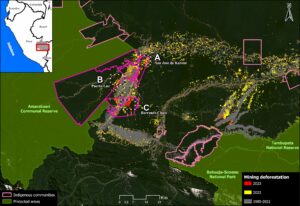 Our newest MAAP report, MAAP #196, shows the results of the socio-environmental impacts caused by illegal mining using a unique tool, the “Illegal Gold Mining Impact Calculator” developed by Conservation Strategy Fund – CSF.
Our newest MAAP report, MAAP #196, shows the results of the socio-environmental impacts caused by illegal mining using a unique tool, the “Illegal Gold Mining Impact Calculator” developed by Conservation Strategy Fund – CSF.

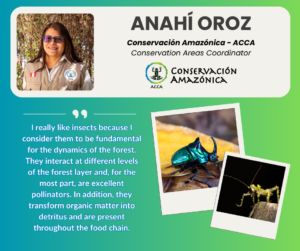




 With over 1,400 member organizations and and a network of over 16,000 scientists, the IUCN drives conservation among organizations across multi-national levels to bring the necessary, knowledge, tools, and resources to progress toward safeguarding the natural world. Since its creation in 1948, it has become the world’s most prevalent environmental network and continues to build on human and economic development to address key conservation areas such as species survival, environmental law, protected areas, social and economic policy, ecosystem management, and education and communication. Each organization in the IUCN plays a unique role in a democratic process, where they can contribute to discussions, agendas, and resolutions that develop the foundation for global conservation. This system has helped to establish significant environmental agreements such as the
With over 1,400 member organizations and and a network of over 16,000 scientists, the IUCN drives conservation among organizations across multi-national levels to bring the necessary, knowledge, tools, and resources to progress toward safeguarding the natural world. Since its creation in 1948, it has become the world’s most prevalent environmental network and continues to build on human and economic development to address key conservation areas such as species survival, environmental law, protected areas, social and economic policy, ecosystem management, and education and communication. Each organization in the IUCN plays a unique role in a democratic process, where they can contribute to discussions, agendas, and resolutions that develop the foundation for global conservation. This system has helped to establish significant environmental agreements such as the 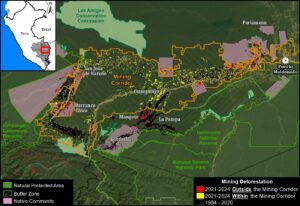 Thanks to support from USAID (United States Agency for International Development) and NORAD (Norwegian Agency for Development Cooperation), we’ve been able to publish a series of reports on the dynamic situation of gold mining in the southern Peruvian Amazon over the past several years.
Thanks to support from USAID (United States Agency for International Development) and NORAD (Norwegian Agency for Development Cooperation), we’ve been able to publish a series of reports on the dynamic situation of gold mining in the southern Peruvian Amazon over the past several years.

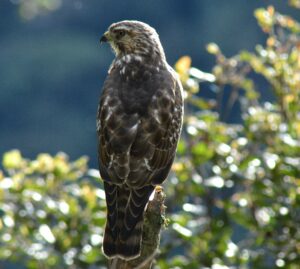
 By becoming a champion for nature and biodiversity today, you are joining a movement with long-term global impacts. Here’s what taking action can look like:
By becoming a champion for nature and biodiversity today, you are joining a movement with long-term global impacts. Here’s what taking action can look like: 
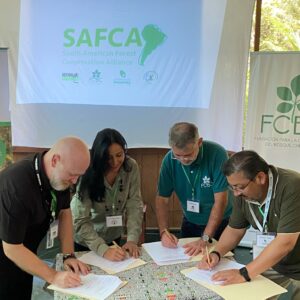 On March 11th, representatives from our sister organizations
On March 11th, representatives from our sister organizations  Amazon Conservation and its alliance has had a long history of teaming up with partners across the Amazon to initiate effective conservation efforts to protect biodiversity and local and indigenous people. Overall, understanding key issues in the Amazon opens doors to opportunities for solutions and action-taking when conserving South America’s tropical forests. The formation of SAFCA will help lead to collective efforts in building climate reliance, strengthening livelihoods, and benefiting both the planet and humanity.
Amazon Conservation and its alliance has had a long history of teaming up with partners across the Amazon to initiate effective conservation efforts to protect biodiversity and local and indigenous people. Overall, understanding key issues in the Amazon opens doors to opportunities for solutions and action-taking when conserving South America’s tropical forests. The formation of SAFCA will help lead to collective efforts in building climate reliance, strengthening livelihoods, and benefiting both the planet and humanity.  Happy Earth Day from all of us at Amazon Conservation!
Happy Earth Day from all of us at Amazon Conservation!  By joining our on-the-ground conservation efforts,
By joining our on-the-ground conservation efforts,  Primary forests in the Colombian Amazon are at risk from a variety of drivers such as illegal roads, which expose them to further threats of deforestation due to cattle pastures, land grabbing, and coca production. These illegal roads threaten protected areas, national parks, and Indigenous territories (referred to as Resguardos in Colombia).
Primary forests in the Colombian Amazon are at risk from a variety of drivers such as illegal roads, which expose them to further threats of deforestation due to cattle pastures, land grabbing, and coca production. These illegal roads threaten protected areas, national parks, and Indigenous territories (referred to as Resguardos in Colombia). This month, we continue to celebrate Earth Month by honoring nature and all of the unique biodiversity and resources that the Amazon offers us.
This month, we continue to celebrate Earth Month by honoring nature and all of the unique biodiversity and resources that the Amazon offers us.  As an integral part of our work to prioritize a forest-based economy across the region, sustainable production also means empowering local producers and families by providing the capacity, tools, and infrastructure that support a sustainable forest-based economy, higher and more stable income, safer harvesting conditions, and improved well-being for local families. As we expand this successful economic model to more communities across the Bolivian Amazon, we have simultaneously supported the growth of local producer associations and their resilience to the impacts of climate change by helping develop local platforms like the
As an integral part of our work to prioritize a forest-based economy across the region, sustainable production also means empowering local producers and families by providing the capacity, tools, and infrastructure that support a sustainable forest-based economy, higher and more stable income, safer harvesting conditions, and improved well-being for local families. As we expand this successful economic model to more communities across the Bolivian Amazon, we have simultaneously supported the growth of local producer associations and their resilience to the impacts of climate change by helping develop local platforms like the  Over the next decade, Amazon Conservation aims to create a true forest-based, climate-resilient economy across 37 million acres of the Amazon by strengthening local communities to fully benefit from the sustainable production of forest-friendly products provided by these rich forests.
Over the next decade, Amazon Conservation aims to create a true forest-based, climate-resilient economy across 37 million acres of the Amazon by strengthening local communities to fully benefit from the sustainable production of forest-friendly products provided by these rich forests.